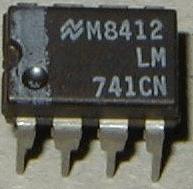Originally from http://max8888.orconhosting.net.nz/
First thing to do is make a schematic in EAGLE Layout Editor. Once you have done this you can then design the layout using Eagle too. Making schematic first helps because Eagle will show you clearly if make any mistakes with the PCB.
Here is the example I will use, it is my prototype line stage used in my preamp:
Print it out onto some semi glossy photo paper. Be sure to select "solid black" in the eagle printing preferences and also unselect silk screen layers so that you only see pads and traces:
Then quickly take this paper, cut out your design and place it face down onto some blank PCB board. Then use an iron and press the design on to the board. Use A LOT of pressure and ensure all parts of the design make good contact with the blank PCB. Keep it pressed for at least 5 mins. I have found that having steam on/off makes no difference.
Then take your blank PCB with the design stuck on to it and soak it in soapy water for about 20 mins to loosen the paper.


Then CAREFULLY remove the paper. Be sure not to remove any of the black ink traces beceause these are what stops the acid in the etching process. I use a kind of rubbing motion to remove the paper. Keep it wet all the time so that it seoarates easily from the copper board.


Done and ready for etching:

Get some etchant and just follow the instructions for the dilution level. I just use a noral ceremic or glass bowel. Ghetto style.

Add boiling water from a jug:

And slowly swirl or rock the bowl around. The liquid must be always moving over the copper board to get it to etch properly.


Done!

Now scrub the black ink off the PCB and voila, you have a custom designed PCB:

Then all you need to do is drill out the holes and start mounting the components:

It will take maybe a couple of tries to get the hang of it but once you've got it you can produce perfect PCBs everytime.
Tips for making PCBs: www.expresspcb.com/ExpressPCBHtm/Tips.htm
Another guide like mine: http://homepage.tinet.ie/~ei9gq/pcb.html
UPDATE
This guide seems to have got a lot of attention lately so I thought I'd update it with some further info:
- You can't do it with Inkjet printers, the ink doesn't stick.
- OKI LED and regular laser printers work well.
- I have only used matt photo paper and have always had perfect results, although glossy would probably work too.
- Once the design is stuck to the PCB put a blank piece of paper over the design and then rub and twist the iron while pressing the print on the PCB. This gives better coverage and makes sure it sticks on all parts of the PCB.
Here is some pics of another design I made:






















1 comments:
One of the main advantages of buying a laser printer is not having to mess with replacing supplies so often, and also because it is supposed to be economical. HP is doing its best recently to make printing less economical.
Post a Comment